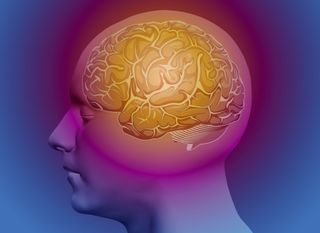Kalamazoo Shooting: When Is a Person Brain Dead?

Abigail Kopf, a teenage victim of a shooting this weekend in Kalamazoo, Michigan, remains in critical condition.
But based upon the possibility that Kopf could die from her injuries, at the request of and with the permission of her parents, the team treating Kopf contacted an organ donation organization, Dr. Aaron Lane-Davies, the medical director of Bronson Children's Hospital in Kalamazoo, where Kopf is being treated, said in a statement.
It was widely reported that Kopf squeezed her mother's hand, raising hopes that she might recover.
In the statement emailed from a hospital spokeswoman to Live Science today, Lane-Davies said that the treatment team had not yet begun to conduct a series of exams that is used to determine whether a person is brain dead. Kopf was not declared brain dead, he said.
Organ donation can only occur after a person has died, and in order to determine if a person is brain dead, a series of physical exams is required, Lane-Davies said. [10 Things You Didn't Know About the Brain]
A person is declared brain dead when the individual has no brain function, no reflexes and cannot breathe on his or her own, said Dr. Patrick Lyden, the chairman of neurology at Cedars-Sinai Medical Center in Los Angeles, who is not involved in treating Kopf. (Reflexes include responses that the brainstem would normally control, such as the pupil contracting when a bright light is shone in the eyes, and the gag reflex.)
When a person is brain dead, there's no chance that the individual could regain the ability to wake up, understand communication, care for himself or herself, or function again, Lyden told Live Science.
Sign up for the Live Science daily newsletter now
Get the world’s most fascinating discoveries delivered straight to your inbox.
This is different from when a person is in a coma — in a coma, the brain is still functioning, but the person is not awake, he added.
The guidelines to determine brain death can vary slightly from hospital to hospital, Lyden said.
But as a rule of thumb, a neurologist or a neurosurgeon would perform a neurological exam on the patient, Lyden said. This exam would consist of trying to wake the patient up by stimulating that person, looking for eye movement, looking at the patient's pupils, looking for motor function and checking a patient's other reflexes, he said.
There are also a number of other tests that aren't necessarily required, Lyden said. For example, doctors may perform an electroencephalogram (EEG) to see if the person has any brain activity (someone who is brain dead would have no brain activity), he said.
Another test, known as an "apnea test," looks at whether or not a person can breathe on his or her own, he said.
Follow Sara G. Miller on Twitter @SaraGMiller. Follow Live Science @livescience, Facebook & Google+. Originally published on Live Science.

